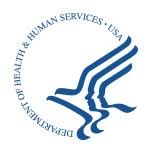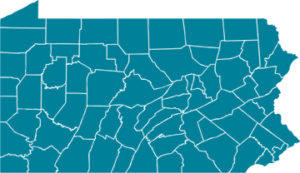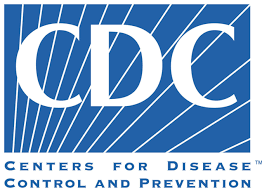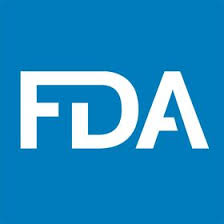COVID-19 Update: June 12, 2020
Coronavirus update for Friday, June 12 as of 4:00 p.m.
A Note About SNAP’s COVID-19 Updates
Beginning the week of June 15, SNAP will prepare COVID-19 updates on Mondays, Wednesdays, and Fridays, with additional updates as needed on subjects that are especially timely or important. SNAP members and update subscribers will continue to receive their updates near the close of the business day and those updates will continue to be posted in this space the following morning.
Pennsylvania Update
The Wolf Administration
 Governor Wolf and Secretary of Health Levine signed amended green phase orders for 12 counties to move to the green phase of reopening at 12:01 a.m. on June 12. With these orders taking effect, there will be 46 counties in green and 21 counties in yellow.
Governor Wolf and Secretary of Health Levine signed amended green phase orders for 12 counties to move to the green phase of reopening at 12:01 a.m. on June 12. With these orders taking effect, there will be 46 counties in green and 21 counties in yellow.
In addition, eight more counties will move to the green phase of reopening at 12:01 a.m. on Friday, June 19.
Department of Human Services
DHS has published a Medical Assistance Bulletin advising providers that they may not charge Medical Assistance beneficiaries for personal protective equipment used in connection with medical or dental services.
Department of Health – by the numbers
- Today’s COVID-19 death count is comparable to what it has been in recent days but the new case count is up slightly.
- 901 Pennsylvanians are currently hospitalized for COVID-19 and 195 of them are on ventilators – both figures much lower than yesterday’s.
- 40 percent of state hospitals’ acute-care beds, 40 percent of their ICU beds, 57 percent of their pediatric beds, and 30 percent of their pediatric ICU beds are currently unoccupied.
State Legislature
The Senate has canceled its session for next week. The House is scheduled to return to session on June 22.
Federal Update
 Department of Health and Human Services
Department of Health and Human Services
- As we reported previously, HHS will be distributing $10 billion in CARES Act Provider Relief Fund grants to hospitals that have served especially large numbers of COVID-19 patients. To apply for these grants, hospitals must submit data to HHS via its teletracking web site. See below for:
- information about the Provider Relief Fund and the grants to high-impact hospitals;
- an FAQ about the grants and the data to be submitted; and
- where to submit the data.
Hospitals must submit their data no later than 9:00 pm (eastern) on Monday, June 15.
- HHS’s Office for Civil Rights (OCR) issued guidance on how the Health Insurance Portability and Accountability Act of 1996 (HIPAA) privacy rule permits covered health care providers to contact their patients who have recovered from COVID-19 to inform them about how they can donate their blood and plasma containing antibodies to help other patients with COVID-19. See the announcement here and the guidance here.
Centers for Medicare & Medicaid Services
In the past week CMS issued five section 1135 waivers to give states greater flexibility to serve their Medicaid beneficiaries during the COVID-19 public health emergency. It issued waivers to Delaware, Oklahoma, Pennsylvania, Tennessee, and Wisconsin.
Food and Drug Administration
- The FDA posted FAQs to address questions about the design, evaluation, labeling, and marketing of hospital beds, stretchers, and mattresses during the COVID-19 public health emergency.
- The FDA issued emergency use authorizations (EUAs) for four new commercial diagnostic tests for COVID-19. Find them here, here, here, and here.
- The FDA issued an EUA for a new serology test for COVID-19. Find it here.
 National Institutes of Health
National Institutes of Health
NIH’s National Institute on Minority Health and Health Disparities is accepting applications for research to evaluate interventions that might lessen the impact of COVID-19 on populations that suffer from health disparities or other vulnerabilities to the virus. Learn more here.
Resources to Consult
Pennsylvania Department of Human Services
Pennsylvania Department of Health
Centers for Disease Control and Prevention
(To receive this daily update directly, sign up for our mailing list at info@pasafetynet.org.)
 On Thursday
On Thursday  Department of Health – by the numbers
Department of Health – by the numbers This week the General Assembly passed a concurrent resolution that seeks to end the governor’s COVID-19 emergency disaster declaration; on June 4 the governor extended that declaration for an additional 90 days. During a
This week the General Assembly passed a concurrent resolution that seeks to end the governor’s COVID-19 emergency disaster declaration; on June 4 the governor extended that declaration for an additional 90 days. During a  CMS has
CMS has  The CDC has updated its
The CDC has updated its  Department of State
Department of State The Wolf administration announced the launch of an enhanced dashboard with data on COVID-19 in the state. Find the announcement
The Wolf administration announced the launch of an enhanced dashboard with data on COVID-19 in the state. Find the announcement  CMS – Stakeholder Engagement Calls
CMS – Stakeholder Engagement Calls The Department of Health and Department of Human Services have issued issued guidance for nursing homes, personal care homes, and other long-term and congregate care facilities as counties enter the green phase of reopening. To prevent further COVID-19 outbreaks within these vulnerable populations, continuing restrictions in long-term and congregate care facilities will remain in place at least 28 days after an individual facility’s county enters the green phase. Go
The Department of Health and Department of Human Services have issued issued guidance for nursing homes, personal care homes, and other long-term and congregate care facilities as counties enter the green phase of reopening. To prevent further COVID-19 outbreaks within these vulnerable populations, continuing restrictions in long-term and congregate care facilities will remain in place at least 28 days after an individual facility’s county enters the green phase. Go  The CDC has updated its guidance on
The CDC has updated its guidance on  The FDA approved an abbreviated new drug application for dexmedetomidine hydrochloride in 0.9% sodium chloride injection (ANDA 209307),
The FDA approved an abbreviated new drug application for dexmedetomidine hydrochloride in 0.9% sodium chloride injection (ANDA 209307),